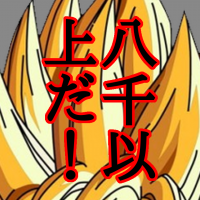Why have I never thought of this before??
من orthohawk, 27 يونيو، 2015
المشاركات: 14
لغة: English
Breto (عرض الملف الشخصي) 29 يونيو، 2015 2:18:14 ص
orthohawk:FWIW, many people in America haven't the slightest idea about the "n-th removed" system.Very true, which is why the lawyers have that table of consanguinity to help them puzzle out estate and inheritance issues. I only know this stuff because I enjoy genealogy, and went hunting for the Esperanto terms a year or two ago myself.
nornen (عرض الملف الشخصي) 29 يونيو، 2015 2:58:53 ص
Breto:I think I know this one, actually. Somewhere on Vikipedio there is a Table of Consanguinity that goes through the whole thing. Basically, Esperanto works almost exactly like English with first cousin, second cousin, etc (unuaranga kuzo, duaranga kuzo, ktp), but instead of being any number of times removed, Esperanto uses first aunt/uncle, second aunt/uncle, etc, and first niece/nephew, second niece/nephew, etc.Thanks for the link.
For example (assuming males throughout for simplicity): Your father's first cousin is your first cousin once removed in English, and you are his first cousin once removed as well. However, in Esperanto, he is your duaranga onklo, and you are his duaranga nevo. Just like with cousins, the number increases the more generations you are removed from a common ancestor.
Edit: Parenceco ĉe Vikipedio
It is really unfortunate that praavoj and prapraonkloj be of the same generation, same with pranepo and prapranevo.
If it were avonklo instead of praonklo and nepnevo instead of pranevo, then the generations would be a lot more consistent.
Breto (عرض الملف الشخصي) 29 يونيو، 2015 3:25:11 ص
nornen:Thanks for the link.Glad I could help.
It is really unfortunate that praavoj and prapraonkloj be of the same generation, same with pranepo and prapranevo.
If it were avonklo instead of praonklo and nepnevo instead of pranevo, then the generations would be a lot more consistent.

True, that setup works a little better when "avo" and "nepo" have the same number of prefixes as "praonklo" and "pranevo" ( as in English "grandfather" and "grandson" to match up with "granduncle" and "grandnephew" ). Then again, this system is a bit more precise than English's system of Xth cousin Y-times removed. In English, my second cousin once removed could be my parent's second cousin, or my second cousin's kid; the common ancestor might be my great-great-grandparent, or my great-grandparent. If I'm talking about my "third niece", on the other hand, we know right away who is in which generation.
Out of curiosity, what inspired you to ask about this? Like orthohawk mentioned, people rarely talk about this kind of thing in detail, or even have the vocabulary to do so, in the US.
nornen (عرض الملف الشخصي) 29 يونيو، 2015 3:58:00 ص
Breto:Orthohawk talked about his own nomenclature for kinship terms. This reminded me of a project we had, where we had to think of a shorthand for arbitrary kinship relations (both by consanguinity and affinity[1]). This reminded me of how symmetrical the Spanish nomenclature [2] is. This raised the question whether Esperanto's nomenclature was as symmetrical. Well, a rabbit hole.nornen:Thanks for the link.Glad I could help.
It is really unfortunate that praavoj and prapraonkloj be of the same generation, same with pranepo and prapranevo.
If it were avonklo instead of praonklo and nepnevo instead of pranevo, then the generations would be a lot more consistent.
True, that setup works a little better when "avo" and "nepo" have the same number of prefixes as "praonklo" and "pranevo" ( as in English "grandfather" and "grandson" to match up with "granduncle" and "grandnephew" ). Then again, this system is a bit more precise than English's system of Xth cousin Y-times removed. In English, my second cousin once removed could be my parent's second cousin, or my second cousin's kid; the common ancestor might be my great-great-grandparent, or my great-grandparent. If I'm talking about my "third niece", on the other hand, we know right away who is in which generation.
Out of curiosity, what inspired you to ask about this? Like orthohawk mentioned, people rarely talk about this kind of thing in detail, or even have the vocabulary to do so, in the US.
----
[1] Which was quite complex as we had to render our shorthand later in Mayan languages, where for instance the kinship term doesn't only depend of the sex of the person (father-mother yuwa-na', son-daughter alalb'ej-ab'in), but also on the sex of the Ego (son-of-a-man alalb'ej, son-of-a-woman alb'ej). For instance I (male) would refer to our son as "walal", while my wife would refer to our son as "wal".
[2] Everbody two generations above you has the word "abuelo", three above you "bisabuelo", four above you "tatarabuelo" etc. Same thing going down: nieto, bisnieto, tataranieto. You can spot immediately how many generations somebody is away from you, and who is the closest common ancestor. Without the unconvenient offset in the number of prefixed pra. Pranepo = bisnieto, prapranevo = sobrino bisnieto.
